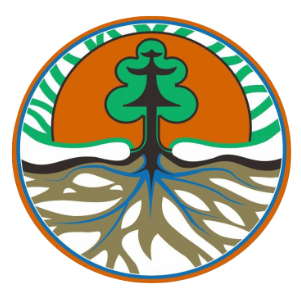
In Indonesia, a huge amount of peat has accumulated under peat swamp forest over millennia. However, a repeatable large-scale fire as a result of land clearing has rapidly devastated these tropical peatlands. These disturbances (e.g. climate change, deforestation, peatland drainage, forest and peatland fires, and land conversion) change the ecosystem respiration and resulting a high carbon emitted to the atmosphere. To restore the peatland ecosystem, Indonesia government makes a special force by using three activities, namely rewetting, replantation, and communal empowerment. These activities need an accurate peatland monitoring. However, accessing the spatial variation of the peatland is quite limited, difficult and laborious. Therefore, we investigated the existence of tropical peatland in Siak, Riau Province, Indonesia. We measured soil moisture at four different types of land cover (namely; forest, oil palm, shrubs, and agriculture) a long with two types of peat conditions. We estimated the Constanta Dielectric (ε) values obtained from a fully polarimetry for ALOS 2/PALSAR. Results indicated that the 8 of oil palm was lower in non-peat area than in peat area, whereas the decrease in 8 probably in peat area resulted from the rapid growth of oil palm.
Download:
 file
file

- Authors: Marpaung, F., Putiamini, S., Fernando, D., Avianti, E., Priyadi, H., Darmawan, A.
- Author Affiliation: Agency for the Assessment and Application of Technology of Indonesia
- Subjects: peatlands, climate change, deforestation, forest fires, remote sensing, monitoring
- Publication type: Journal Article
- Source: IOP Conference Series: Earth and Environmental Science 165(1): 012014
- Year: 2018
- DOI: https://doi.org/10.1088/1755-1315/165/1/012014















